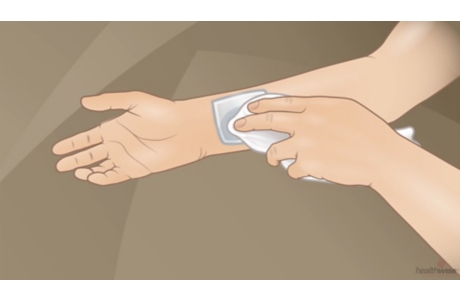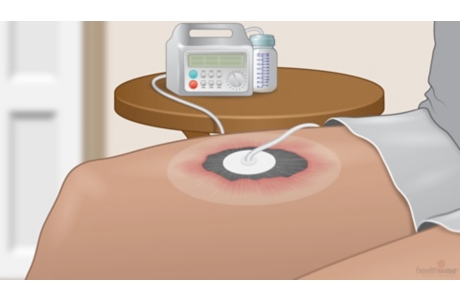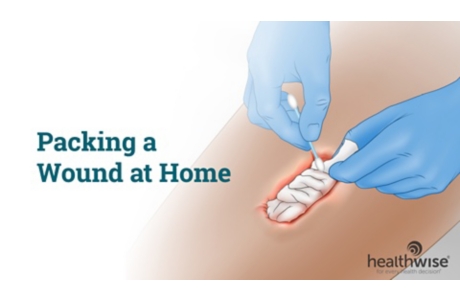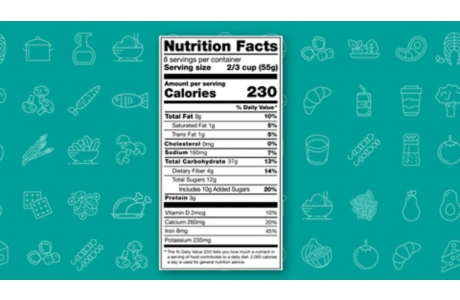High-Protein Foods for Wound Healing
Topic Overview
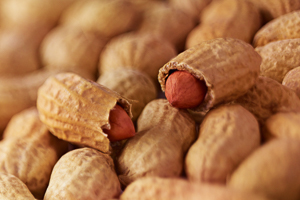
How does protein help with wound healing?
Your body needs protein to help build and repair muscle, skin, and other body tissues. Protein also helps fight infection, balance body fluids, and carry oxygen through your body.
When you have a wound that’s healing, think of food as medicine. Eat a balanced diet with enough calories and plenty of protein.
How much protein you normally need each day depends on your age, your sex, and how active you are. You may need to eat more protein to help a wound heal. Your doctor can advise you on the right amount of protein you need.
What are high-protein foods?
High-protein foods include lean meat, poultry, and fish. A serving of these foods is about 3 ounces. That’s about the size and thickness of a deck of cards.
Protein isn’t just found in meat. You can also get plenty of protein from eggs, dairy and soy products, beans, nuts, and seeds.
|
Food |
Serving size |
Protein (g) |
|---|---|---|
|
Meats |
||
|
Beef, ground, 90% lean |
3 oz |
22 |
|
Pork chop or roast |
3 oz |
18 |
|
Fish |
||
|
Salmon, coho, wild |
3 oz |
23 |
|
Tilapia |
4 oz |
23 |
|
Tuna, white, canned in oil, drained |
3 oz |
23 |
|
Poultry |
||
|
Chicken, rotisserie |
3 oz |
19 |
|
Turkey, breast, roasted |
3 oz |
26 |
|
Turkey, ground, 93% lean |
3 oz |
22 |
|
Eggs and Dairy |
||
|
Cheese, cheddar, diced |
½ cup |
15 |
|
Cheese, cottage, 2% milk fat |
4 oz |
12 |
|
Egg, whole, poached or fried |
1 large |
6 |
|
Milk, nonfat, 1% or 2% milk fat |
1 cup |
10 |
|
Yogurt, fruit, low-fat |
6 oz container |
7 |
|
Beans and Soy Products |
||
|
Baked beans with pork, canned |
1 cup |
13 |
|
Black beans, canned |
1 cup |
15 |
|
Soy milk, original and vanilla |
1 cup |
6 |
|
Tofu |
4 oz |
22 |
|
Nuts and Seeds |
||
|
Almonds or sunflower seeds, roasted |
½ cup |
14 |
|
Peanuts, dry-roasted |
½ cup |
18 |
|
Peanut butter, smooth, with salt |
2 Tbsp |
7 |
|
Wheat germ, toasted |
2 Tbsp |
4 |
What are some tips for getting more protein?
You can get more protein in your food by adding high-protein ingredients. For example, you can:
- Add powdered milk to other foods, such as pudding or soups.
- Add powdered protein to fruit smoothies and cooked cereal.
- Add beans to soup and chili.
- Add nuts, seeds, or wheat germ to yogurt.
You can also:
- Spread peanut butter onto a banana.
- Mix cottage cheese into noodle dishes or casseroles.
- Sprinkle hard-boiled eggs on a salad.
- Grate cheese over vegetables and soups.
Current as of: November 7, 2018
Author: Healthwise Staff
Medical Review:Elizabeth T. Russo MD – Internal Medicine & Kathleen Romito MD – Family Medicine & Rhonda O’Brien MS, RD, CDE – Certified Diabetes Educator
This information does not replace the advice of a doctor. Healthwise, Incorporated, disclaims any warranty or liability for your use of this information. Your use of this information means that you agree to the Terms of Use. Learn how we develop our content.



